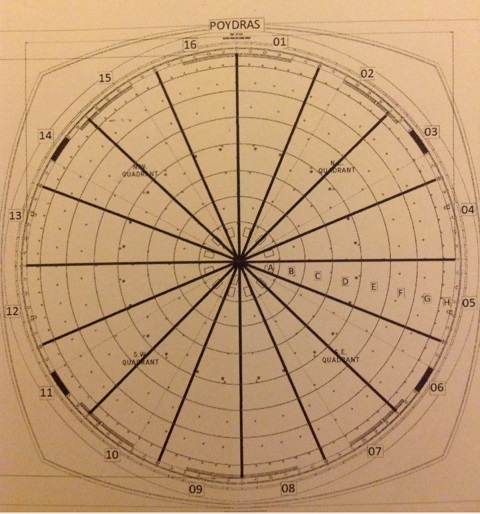Editor’s note: This “Science Behind It” coincides with the July 2015 article about the recoating of the Superdome in New Orleans. Check that out here. Here, the project manager from Brazos Urethane shares his insight into how they approached the recoating of the Superdome’s circular roof.
Recoating the Superdome’s 450,000 square feet (41,806.4 m²) with 14 crew members required meticulous planning upfront. We had a set amount of time, money, and materials, so our strategy behind the coating really needed to help us stay within the goal posts.
Easy as Pie
We divided the dome into 16 pieces of pie. Before any spray application started, we made lines from the top center of the roof to the gutter tub system on the bottom. We marked the dome around the gutter edge and “drew” lines with spray paint and a rope that was stretched from top to bottom. This helped us to keep things straight and perfectly symmetrical.
Each piece of pie was then subdivided into eight sections from the tip to the edge of the pie piece. Those areas were also marked with spray paint. The subsections varied in sizes that were at most 50-feet (15.2 m) long. We measured the square footage of each subsection and kept that information on a chart, allowing us to know the exact square footage of each of the 128 increments charted on the dome.
I told Mark Jones, the foreman on the project, that I wanted the dome “sliced and diced” so we could track all applications and applicators at any point on the 10-acre (0.04 km²) roof. And that’s exactly what he did.
Coordination Is Key
A project this big meant big-time coordination. All pumps and drums were marked and coordinated with an applicator. As they reached each subdivision mark in their piece of pie, each applicator would radio down to the pumping station to determine the amount of coating that was used on each area. The chosen coating wasn’t cheap, so the goal was to try to use it at the exact millage or thickness required for the project. After all, 750 feet (228.6 m) of hose is a lot to consider!
Gun tip sizes were quite small (#817) and pressure was constantly being adjusted. Both of those variables also assisted us with applying the proper rate of material in each area. To make it entertaining, the crew members competed with each other as far as accuracy with quality being stressed over quantity.
Proof Is in the Numbers
Out of the basecoat and topcoat ordered for the project, there were a total of 35 gallons (132.5 L) left over at the end of the job. Out of the 7,825 gallons (29,620.9 L) ordered at the beginning of the project, we used 7,790 gallons (29,488.4 L) total. That just goes to show that the quality control measures we put in place for the recoating of the Superdome proved to be 100 percent successful.
About the Author:
Tom Keller has been in the foam business for 35 years. He started out as a helper, and moved through the ranks to applicator, foreman, estimator, and project manager. He started working on domes in the mid-70s. Keller became the temporary project manager for the Superdome roof in 2005, and he became the project manager for recoat of Superdome in 2014. He is known as “Tom the Roofer” at the Superdome. For more information, contact: Brazos Urethane, (866) 527-2967, www.brazosurethane.com
